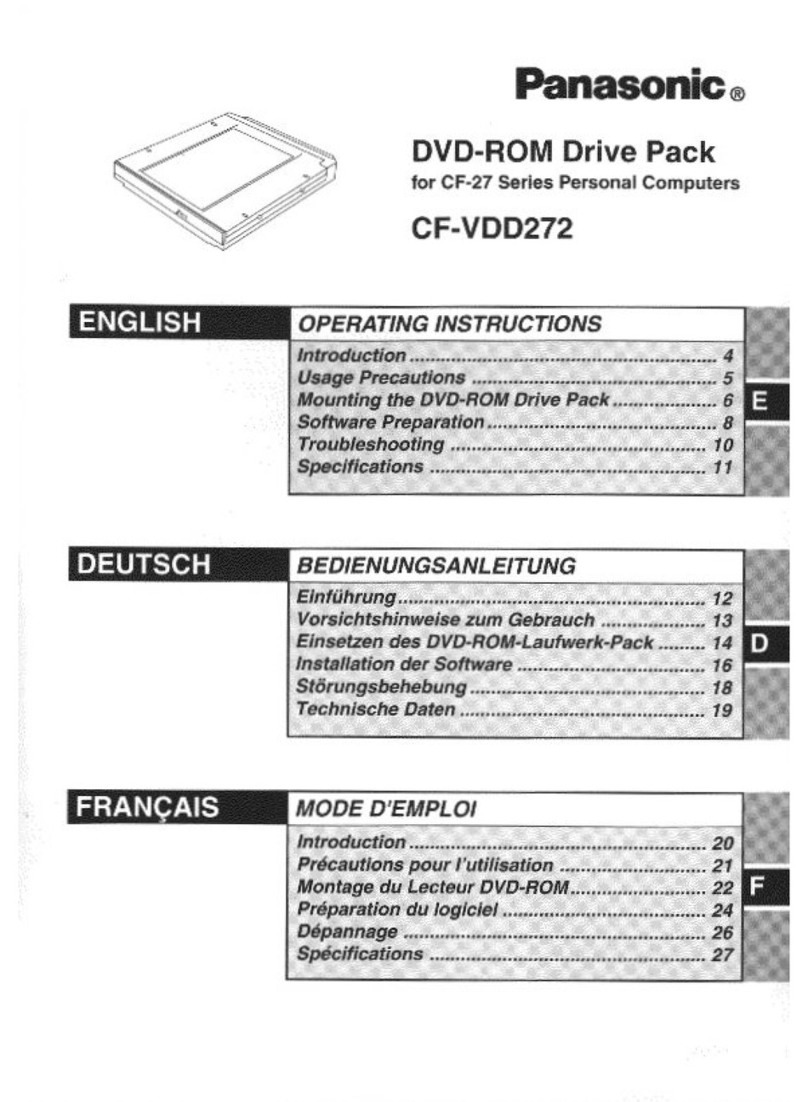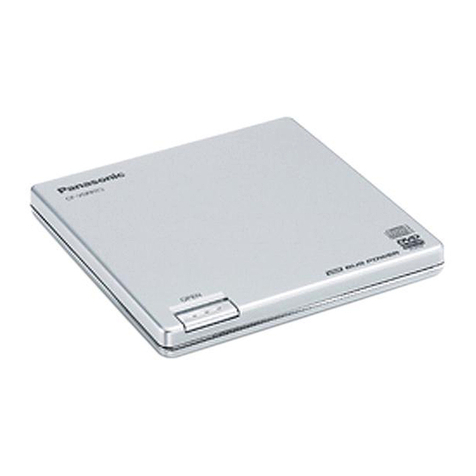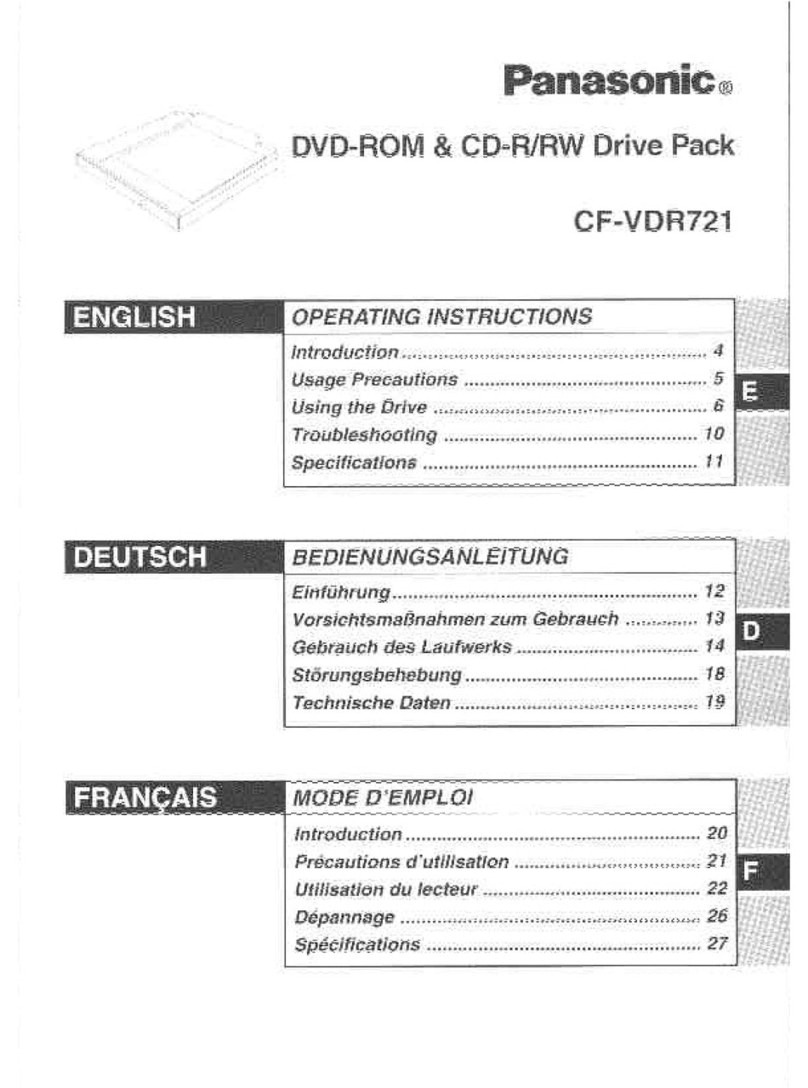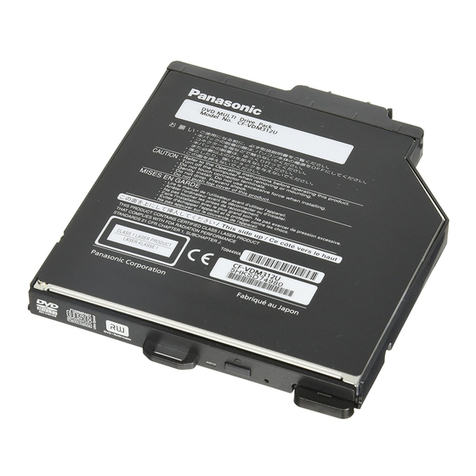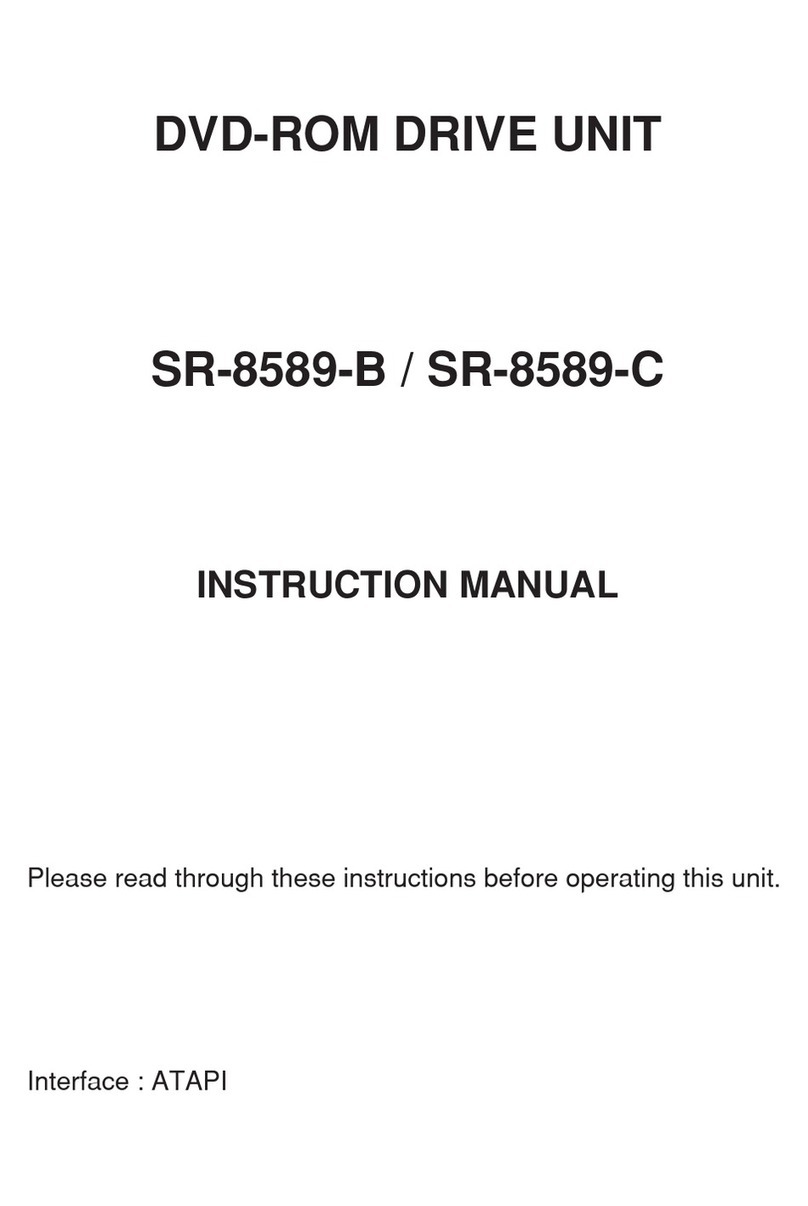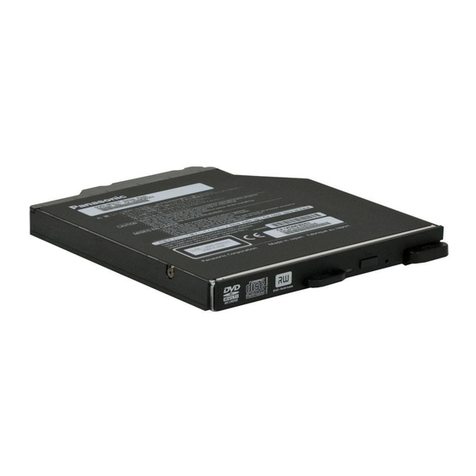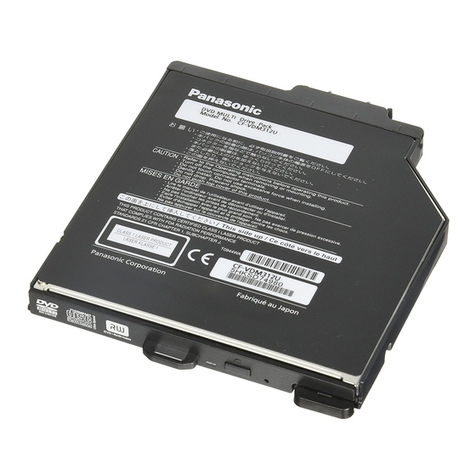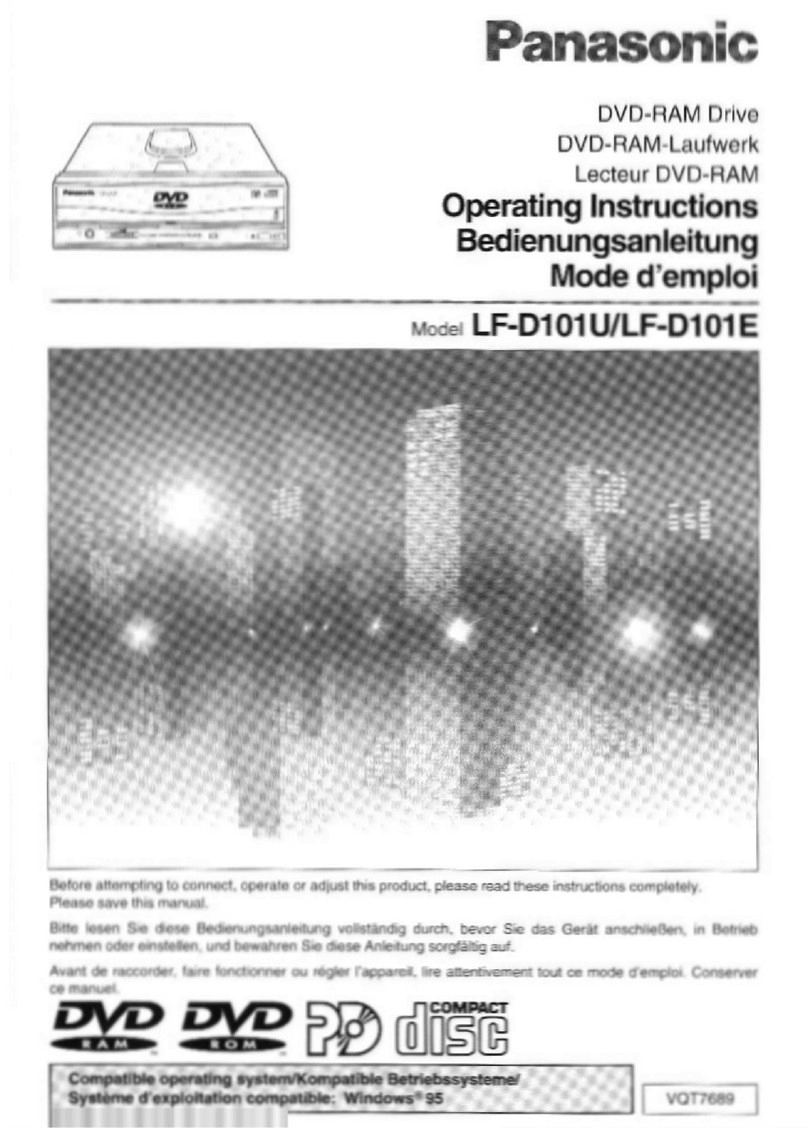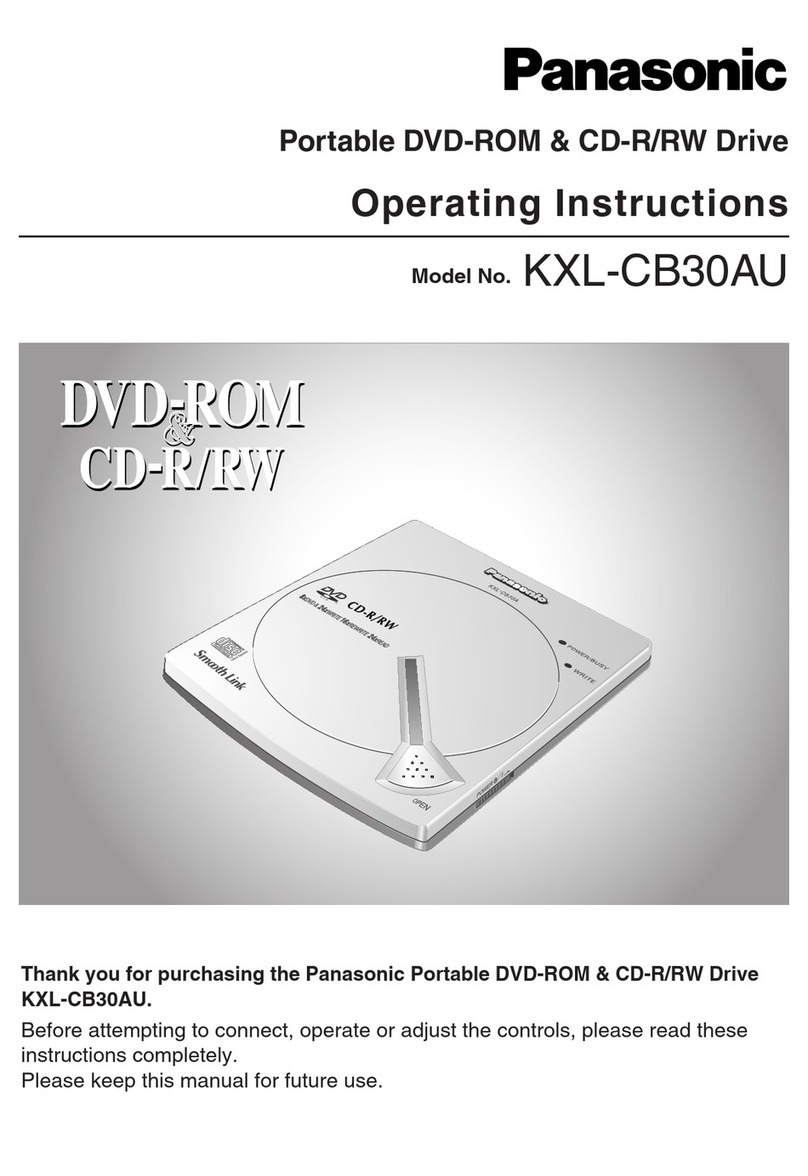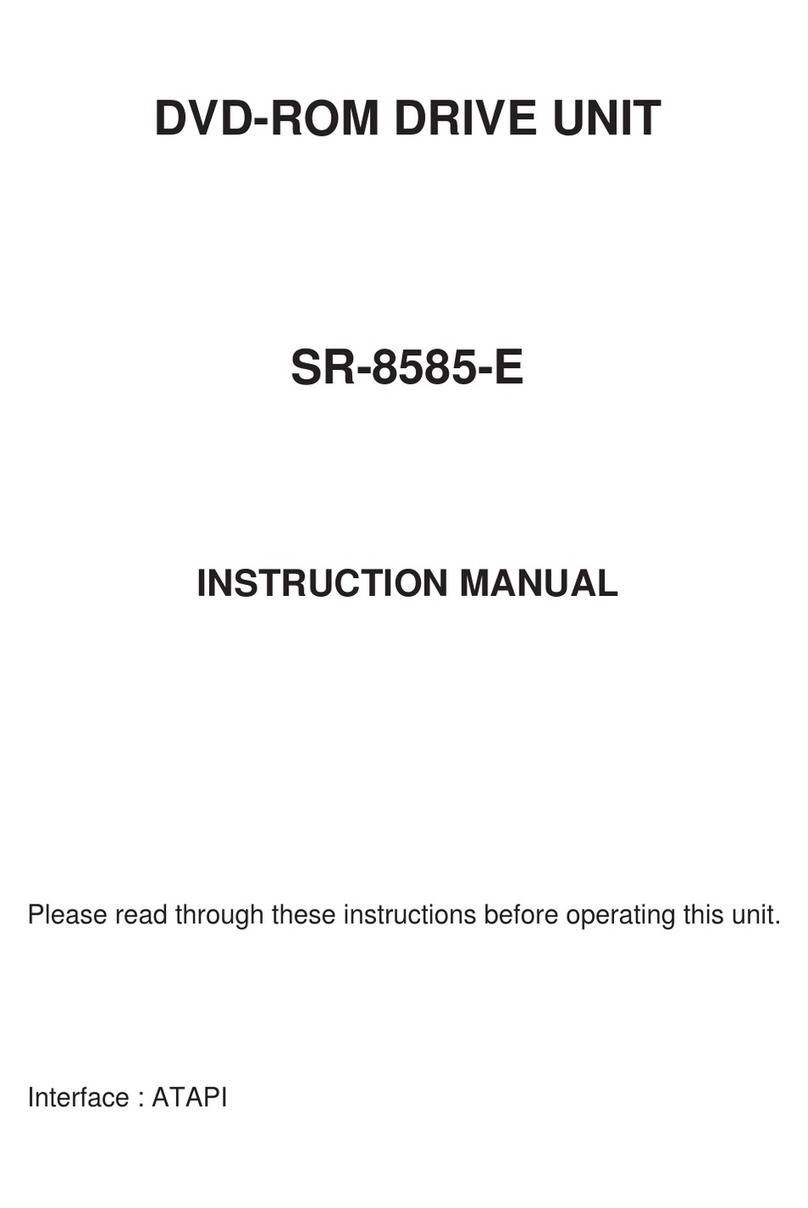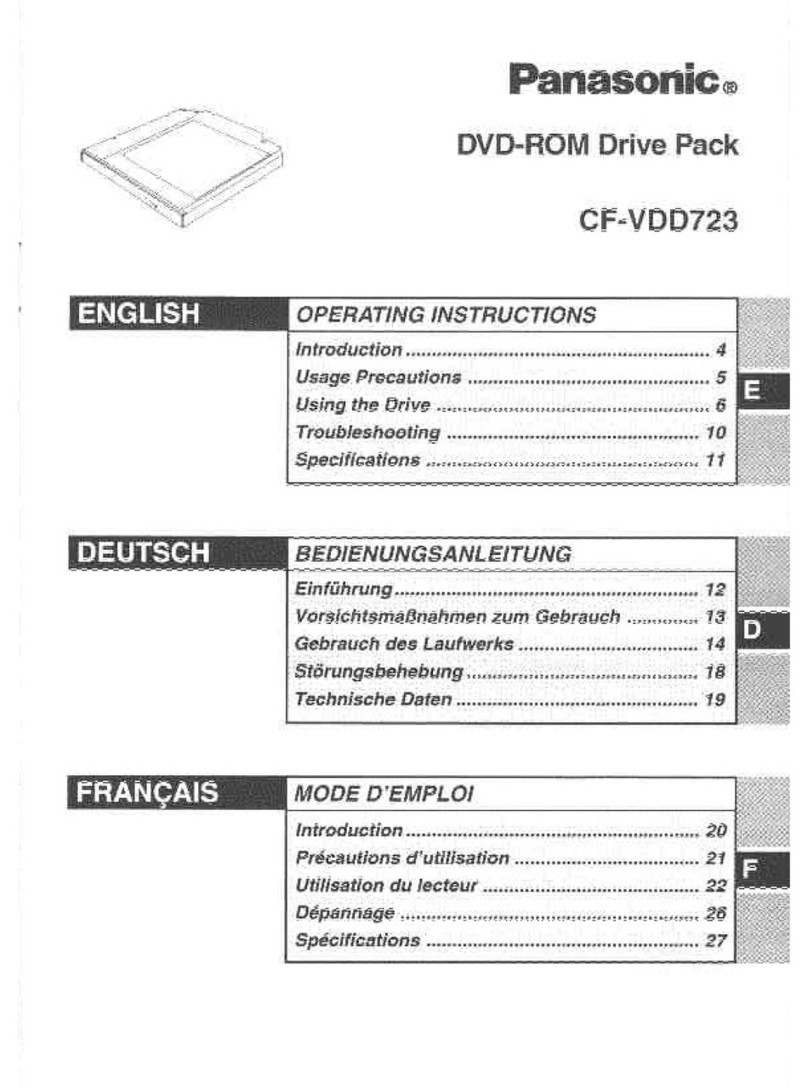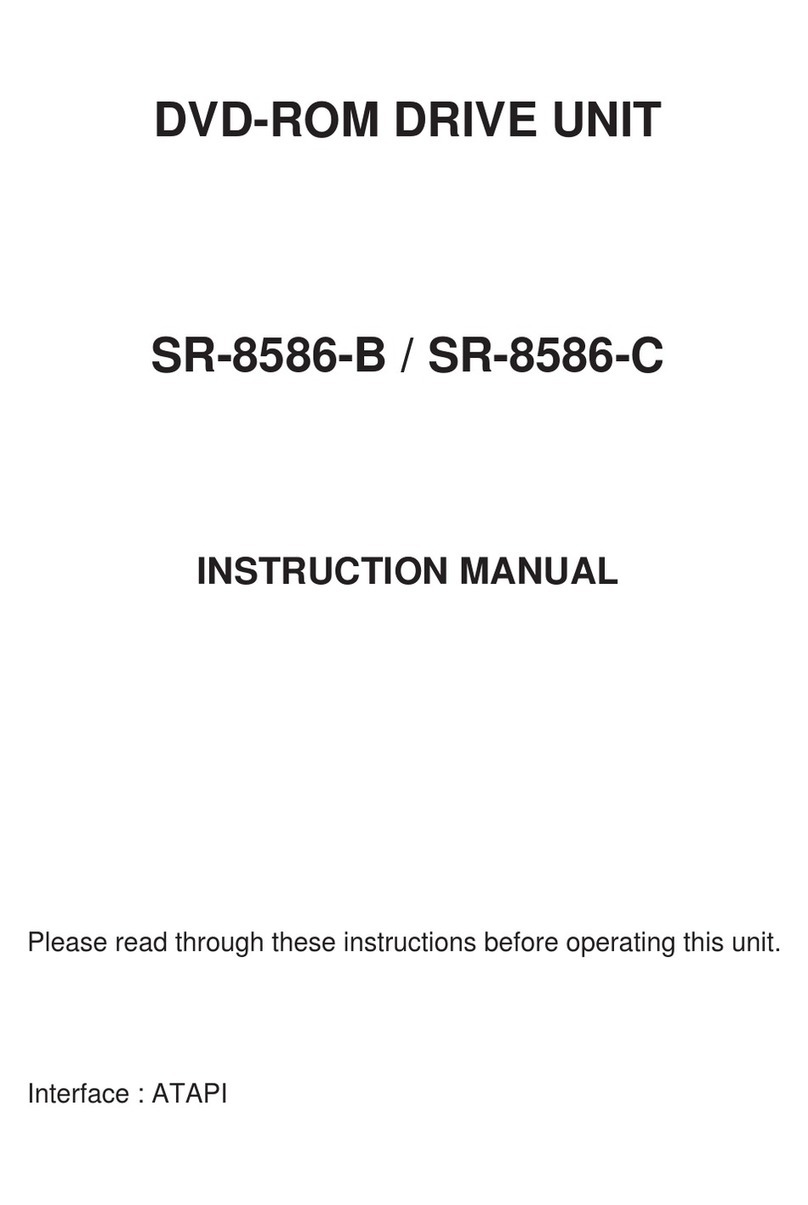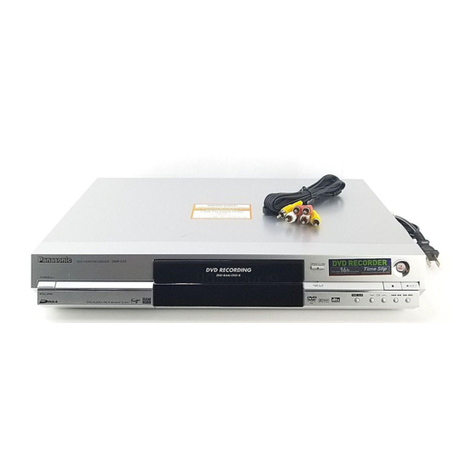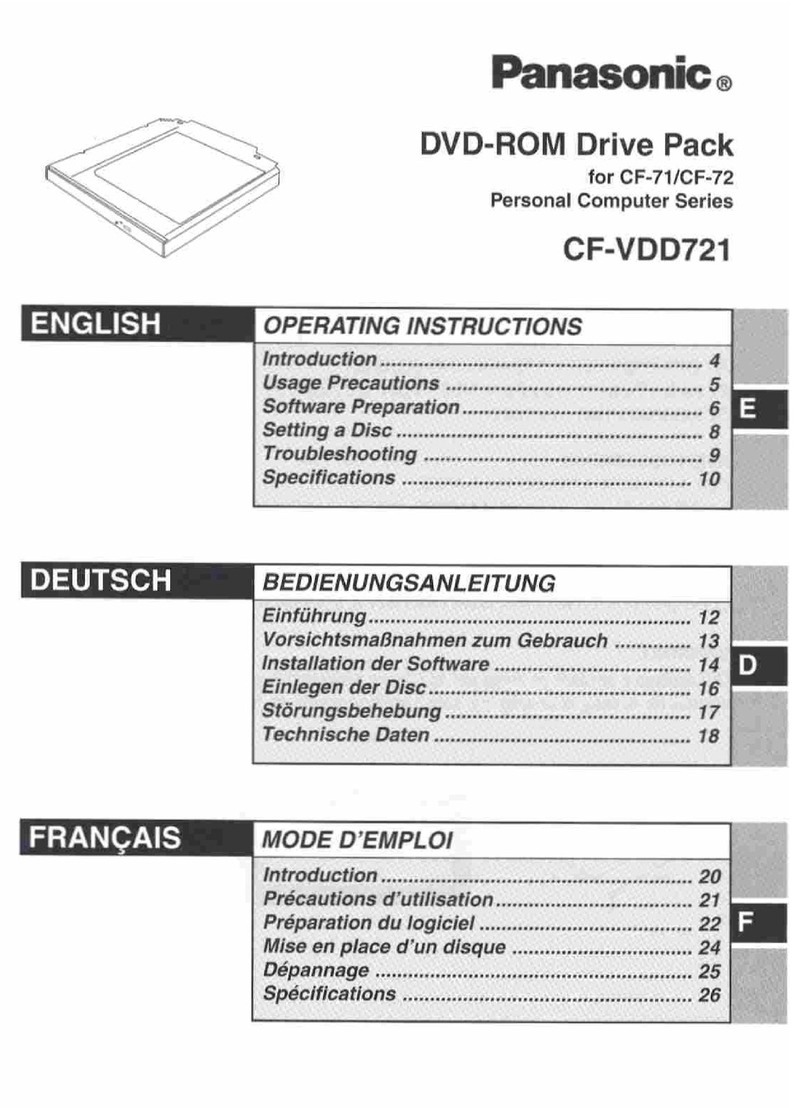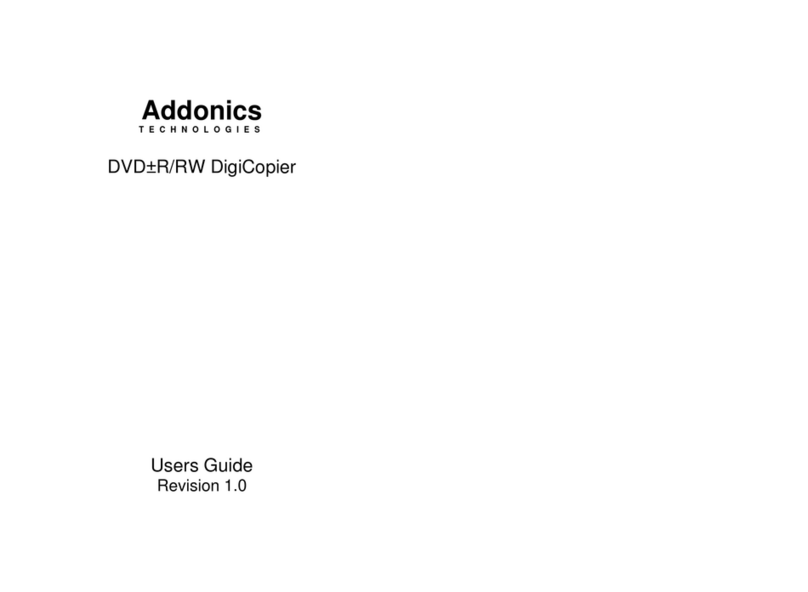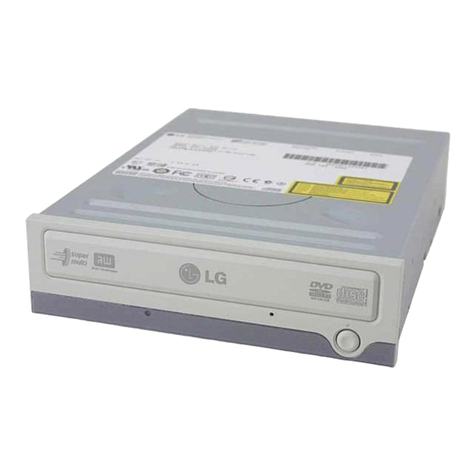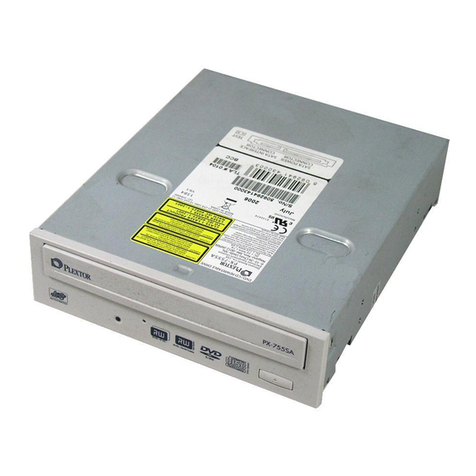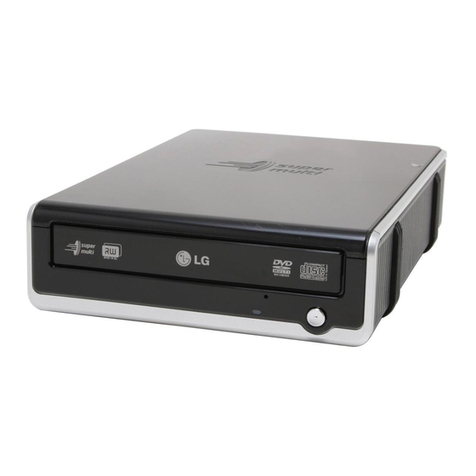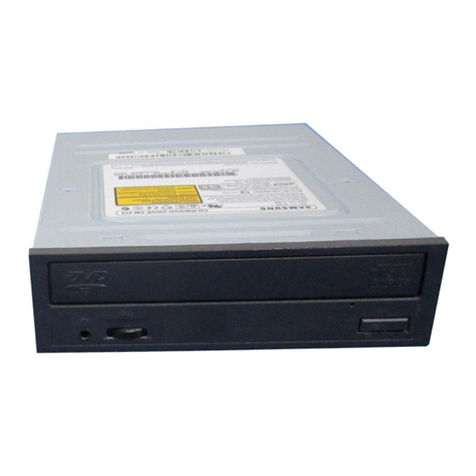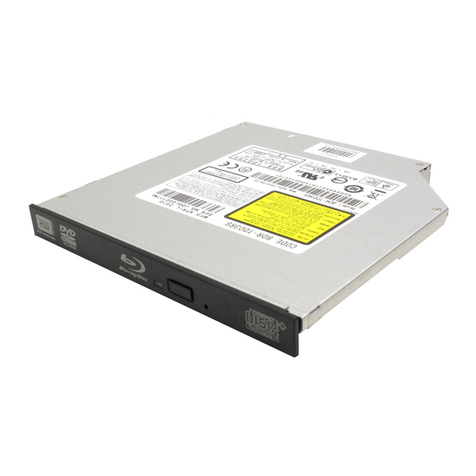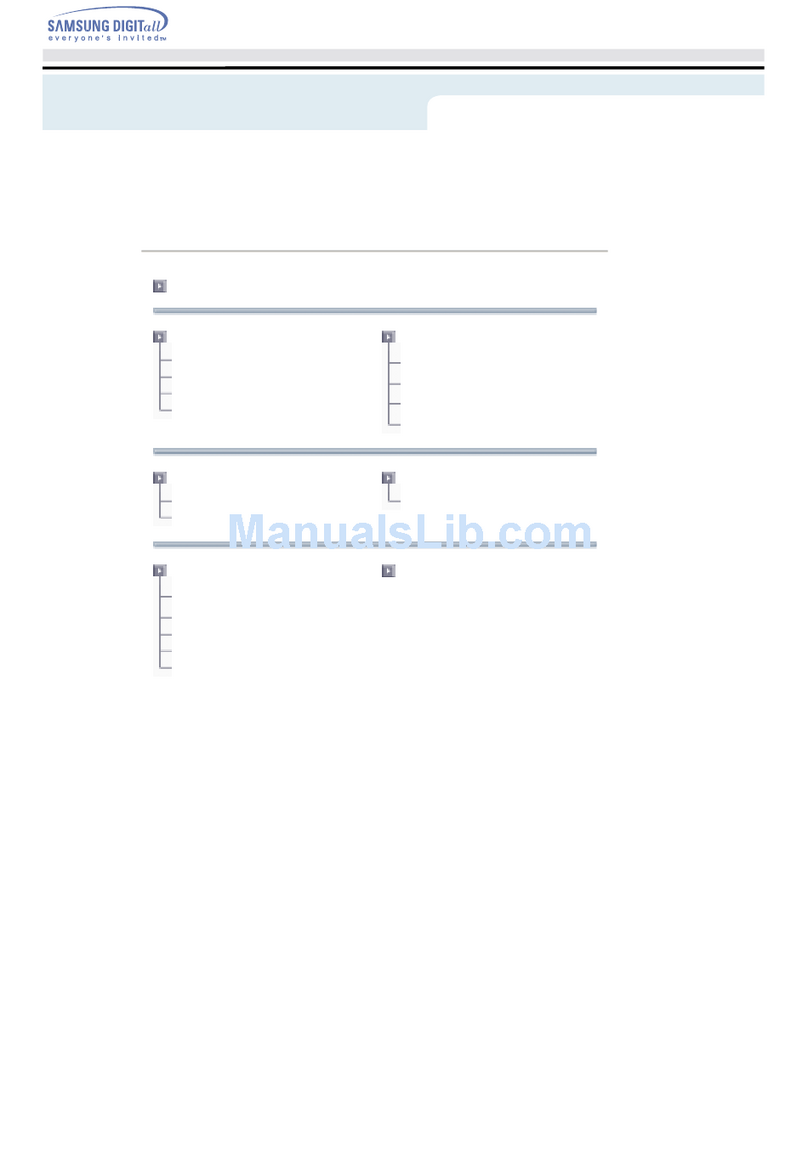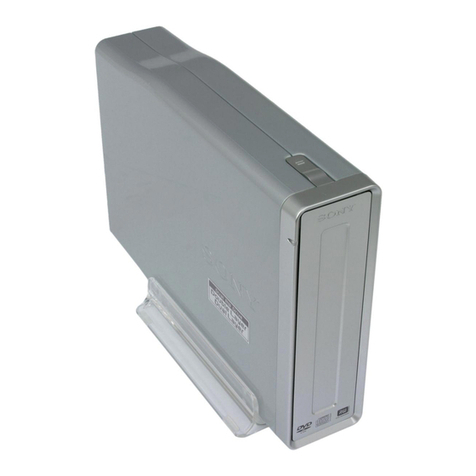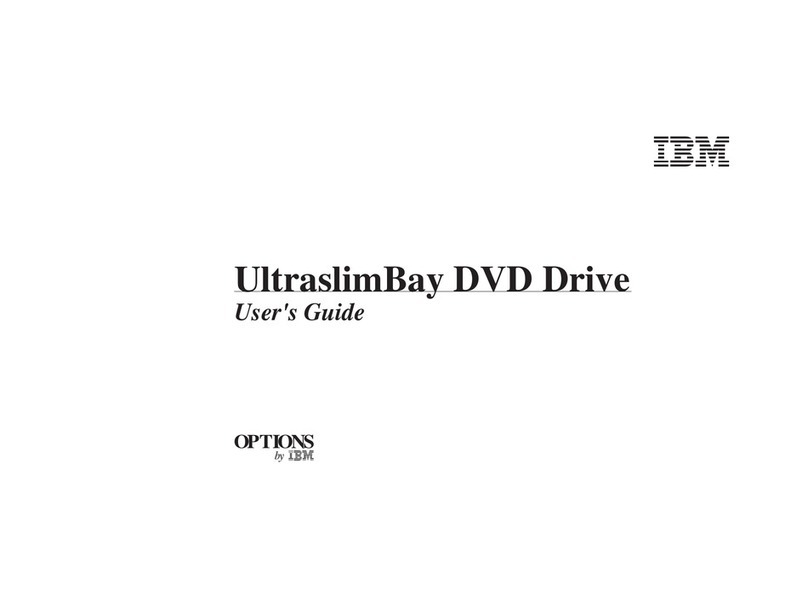
7
E
Do not use deformed, warped, or irregularly shaped disks.
Reading of disk may not be possible depending on the disk conditions (cracks, dirt,
modification, data recording quality, copy protection, recording equipment/software that
was used to create the disk, etc.)
Before using a disk, carefully read the operating/handling instructions and package of
the disk.
If the disks are not handled appropriately, they may become dirty or scratched. Further-
more the writing speed may get slower and the data may not be correctly written on or
read from the disk. Other damage may cause a drive failure.
Note the following precautions.
• Do not touch the disk surface (the side with no printing).
• Keep the disk surface clean and free from dirt, dust, fingerprints and scratches.
• Do not write on the surface of the disk with a ballpoint pen or other writing instrument.
• Do not attach stickers to disks.
• Do not drop, bend, or place heavy objects on top of disks.
•
Do not place or store disks in locations exposed to heat, direct sunlight, humidity or
dust.
• If a disk is brought from a cold to a warm location, condensation may form on the
disk. For read-only disks, wipe off the condensation using a soft, dry, lint-free cloth be-
fore using the disk. For recordable/rewritable disks, wait until the condensation dries.
•When not using disks, keep them in their protective cases or cartridges.
To clean disks
<For read-only disks>
Wipe disks with a dry, soft cloth from
the center toward the edge.
If disks get very dirty, wipe with a
moist, soft cloth from the center toward the edge, then wipe again with a dry cloth to
take up remaining moisture.
<For recordable/rewritable disks>
Use the Panasonic disk cleaner to clean these disks.
Do not use a cloth, CD cleaners or any other such cleaners under any circumstances.
How to hold a disk
Disk Handling Care
CF-VDM742.indb7CF-VDM742.indb7 2006/09/2615:44:182006/09/2615:44:18

